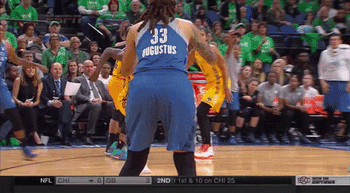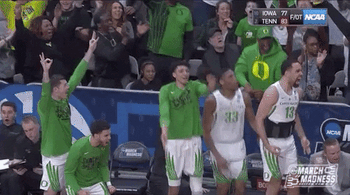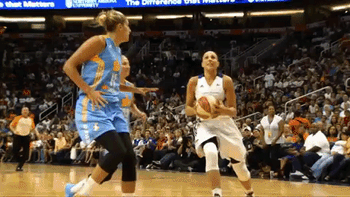How women's pro leagues are adapting to the new NIL reality

🏀 The crossover event: An exclusive with Cathy Engelbert
WNBA commissioner Cathy Engelbert sees a lot of synergy between college and pro women’s basketball, especially in the NCAA’s NIL era. “Think about the brands that are getting [involved],” she told The GIST. Players “have local brands like the men do, but they're getting national brands like the Gatorades and Nikes, who are partners of the WNBA.”
- It creates a natural runway as college basketball’s best take flight and “graduate to the WNBA.” Sponsors who ink deals with NCAA hoopers now have a chance to continue working with them and the league in the pros.
The WNBA is developing a new marketing strategy to capitalize on the hype surrounding college stars. The first step? Billing their rookie seasons as “the continuation of their … story, with the next chapter [to] be told around their ascension to the WNBA,” per Engelbert.
- The league will rely on both marketers’ and athletes’ storytelling abilities to maximize gains. The top stars are “great players on the court, but they're influencers off the court,” she added. “That's something we can work with and … when they come into the W, continue to tell the stories of their journey through basketball.”
Incoming athletes and brands aren’t the only ones pitching in. “[We are] working hard with our broadcast partner — ESPN, ABC, Disney — to connect our current athletes back to their college campus,” she said. Legends like Diana Taurasi and Sue Bird “had a presence throughout Final Four weekend, in the community, in the arena, on broadcast.”
- The cross-promo will hopefully translate into the WNBA feeling like a complementary offering to the popular college hoops scene. “[We] will continue to invest on the marketing aspect of this, making fans aware of the compelling stories coming in,” the commish added.
Combined storytelling efforts from athletes, media partners, and brands will help the WNBA with its largest goal — growing its fanbase. “[NIL has] actually turned out to be something where it's allowed these players, even before they come into the WNBA, to build their brands [and] have a lot of [followers],” Engelbert noted.
- The commissioner also feels that marketing towards college alumni will invite them to stay invested in athletes’ careers after graduation and, therefore, in the WNBA itself. Better together.
🩹 Solving problems
By some accounts, NIL butts heads with pro sports and nowhere is that more visible than women’s basketball. Athletes are spending more time in college — LSU champion Angel Reese is “in no rush” to go pro because she’s earning more than some top WNBA players, while UCLA’s Charisma Osborne withdrew her name from this year’s draft.
College sports currently provide a guaranteed paycheck for young stars, according to Opendorse senior director of marketplace success Lisa Bregman. “NIL is in year two,” she said. “It's a hot space right now that brands want to play in, so if you remove yourself from that, you're removing yourself from the hot space.”
- “The other part of that is that idea of the relevance on a college stage and the ability to stand out at that level versus maybe standing out [at] the WNBA level,” she added. Rookies can face on-court learning curves that temporarily dent their marketability.
- Even if college’s top talent eventually translates their skills and marketing appeal to the pros, there’s still a lot of money to be made before draft day — the average deal size for women college guards is $2,769, per Opendorse.
That doesn’t necessarily mean sponsorship dollars won’t follow college athletes into the pros. “A player that's got a lot of buzz and a lot of following and engagement around them is helpful, especially in the WNBA,” Bregman noted. “It’s going to bring eyeballs to your team.” Social butterflies.
Rising stars also bring brand-new fan bases with them. Despite occurring simultaneously, the rise of NCAA women’s hoops and the WNBA are notably different growth stories, according to Sports Innovation Lab’s (SIL) lead data scientist Molly Tissenbaum, because of the former’s “self-contained” marketing model.
- In college sports, “you've got a built-in fan base from the get-go that you don't really have to invest in the same way that you would if you're starting a WNBA or pro team in a new city,” she said. “You can work to grow those audiences and find those fans and what they care about on a local level.”
SIL is currently collaborating with the WNBA to tap into its fan base and maximize the pro league’s 12-city presence through a mix of national and local deals. “What we're working with the league and the teams to strategize on is what the right balance is between these big national deals and [the] individual market,” Tissenbaum said.
- “What we're seeing at the individual markets from a fan perspective … are significant differences in the buying patterns and the brand associations that we see on a market to market level,” she added.
Though Tissenbaum suggested pro leagues may not necessarily need to borrow all business practices from college sports, the NCAA’s ability to ink both regional and national sponsors may benefit the WNBA and its teams. Mix and match.
🔑 Key takeaways
Plenty of unknowns remain about NIL’s relationship to the pros since the collegiate athlete endorsement marketplace is only in its sophomore year, but there are still a handful of lessons to learn from as women’s sports chart their meteoric rise.
☀️ Brands can get in on the ground floor by signing deals with the next big athletes before they enter professional leagues and reap the benefits of young players’ unmatched content creation skills. And if they’re lucky, maybe Ben Affleck will make a movie about it.
🗺️ Local sponsorship deals may be a major new avenue for women’s sports teams, leagues, and athletes alike, as Tissenbaum alluded to. They help all parties to sell inventory and build regional authenticity with audiences who will drive valuable IRL revenue.
🥇 Athletes in sports with fewer chances to go pro can still reap NIL rewards, as will the brands that partner with them. “For these college athletes, and I think especially women, this is such a unique opportunity for them to make money off of their athletic skill, off of their brand in a way they probably won't be able to once they leave college,” per Bregman. Building the blueprint.
Enjoying this article? Want more?

Sign up for The GIST and receive the latest sports news straight to your inbox three times a week.




